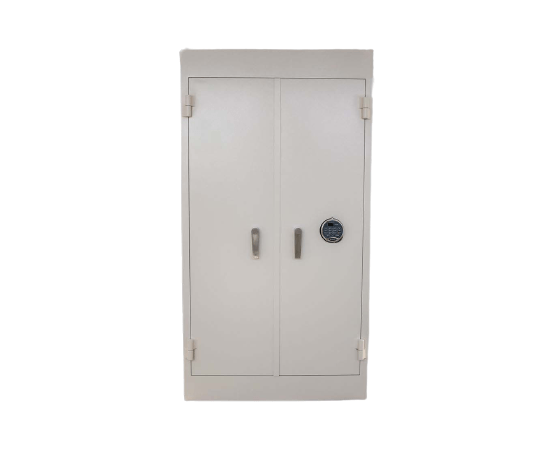Throughout history, people have had the desire to protect their valuable possessions. Whether it be gold, cash, or important documents, the need for a secure place to store these items has been a constant. From old wooden boxes to modern-day high-tech vaults, safes have come a long way. In this article, we will journey through time and explore the fascinating evolution of safes. We will start from the earliest examples to the latest technological advancements. So, hold on tight as we take a deep dive into the world of safes and discover how these simple boxes have transformed into impenetrable fortresses.,
Earliest Examples of Safes
The earliest safes are believed to have originated in ancient Egypt and Greece, where wooden boxes with intricate locking mechanisms were used to secure precious objects. As civilization progressed, the need for more secure storage options led to the emergence of iron safes.,
The Emergence of Iron Safes
Iron safes came with the rise of metalworking in medieval Europe, offering a higher level of security than their wooden counterparts. These early iron safes were typically constructed with heavy iron plates, secured with large bolts, and often adorned with intricate designs. As technology improved, the safes were fitted with more complex locking mechanisms, including combination and time locks.
The popularity of iron safes continued to grow throughout the Industrial Revolution as banks and businesses demanded more secure storage options for their valuable assets. As a result, safe manufacturers began experimenting with new materials and designs, creating even more robust and more sophisticated safes.
The emergence of iron safes paved the way for the technological advancements that would follow as designers and engineers continued to push the boundaries of what was possible with safe design. The evolution of safes has come a long way since their humble beginnings, and the next section will explore the exciting developments that have taken place in recent years.,
Technological Advancements in Safe Design
Safe manufacturers began experimenting with new materials and designs as the demand for secure storage options grew. This led to the emergence of technological advancements in safe design, creating even stronger and more sophisticated safes. Innovations such as reinforced steel walls, multiple locking mechanisms, and fireproof materials became standard features in high-end safes.
One significant technological advancement in safe design has been the integration of electronic locks. Combining advanced encryption and biometric authentication, electronic locks provide a higher level of security than traditional combination locks. In addition, the use of digital interfaces allows for remote monitoring and control, making it easier for owners to manage access to their valuables.
Another recent development in safe design is the use of modular components. This allows the safe's interior to be customized and reconfigured to fit different items, such as jewelry or firearms. Additionally, modular safes can be easily expanded or moved, making them ideal for businesses or individuals who need to adapt to changing security needs.
These technological advancements in safe design have revolutionized how we protect our valuables. From the reinforced steel walls of early iron safes to the biometric authentication of modern-day high-tech safes, the evolution of safes continues to push the boundaries of what is possible. Next, we will explore some of the most advanced and cutting-edge safes available in today's market.,
Modern-Day High-Tech Safes
As technology advances rapidly, so do the security measures used to protect our most valuable possessions. High-tech safes now feature biometric authentication, meaning only authorized users can access the contents of the safe. This could include fingerprint, retinal, or facial recognition technology, making it nearly impossible for unauthorized individuals to gain access.
Some high-tech safes also feature remote monitoring capabilities, allowing owners to monitor their safe from a distance. This could include alarms that send notifications to a phone or computer when the safe has been tampered with or even live video feeds that can be accessed from anywhere in the world.
In addition, advanced safes are often constructed from materials designed to resist even the most sophisticated attacks. This could include reinforced steel walls, sophisticated locking mechanisms, or bulletproof glass.
Finally, many high-tech safes are designed with customization in mind. Owners can customize the safe's size, shape, and interior configuration to fit their specific needs, whether for jewelry, firearms, or other valuable possessions.
As technology advances, it's clear that the evolution of safes will continue to push the boundaries of what is possible. These high-tech safes represent the cutting edge of secure storage, offering unparalleled protection for our most valuable possessions.,
Throughout history, the evolution of safes has been propelled by the need for protection and security. From primitive wooden boxes to the sophisticated high-tech safes we have today, the journey has been incredible. We have witnessed the emergence of iron safes and technological advancements in safe design. As technology continues to improve, we will undoubtedly see further innovations in safe technology. Ultimately, it's crucial to stay informed about the latest advancements in the industry. After all, safeguarding your valuables is a wise investment. As the adage goes, "Better to be safe than sorry."








